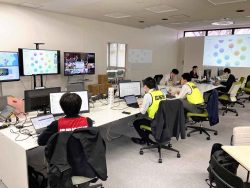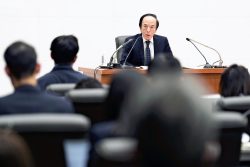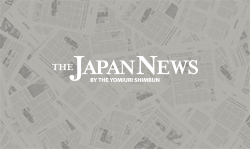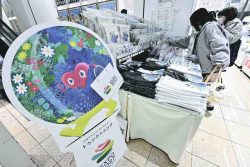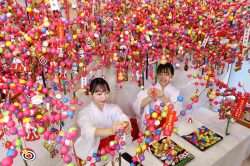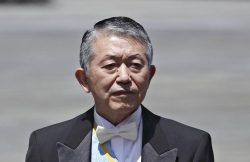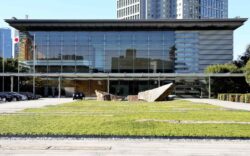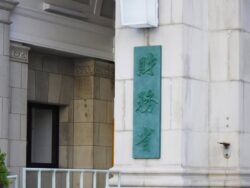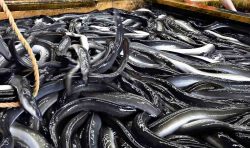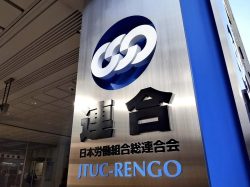2 Danish Journalists Document Japan’s Expos at 2 Different Times; Looking for ‘Surprises’ at Major Events
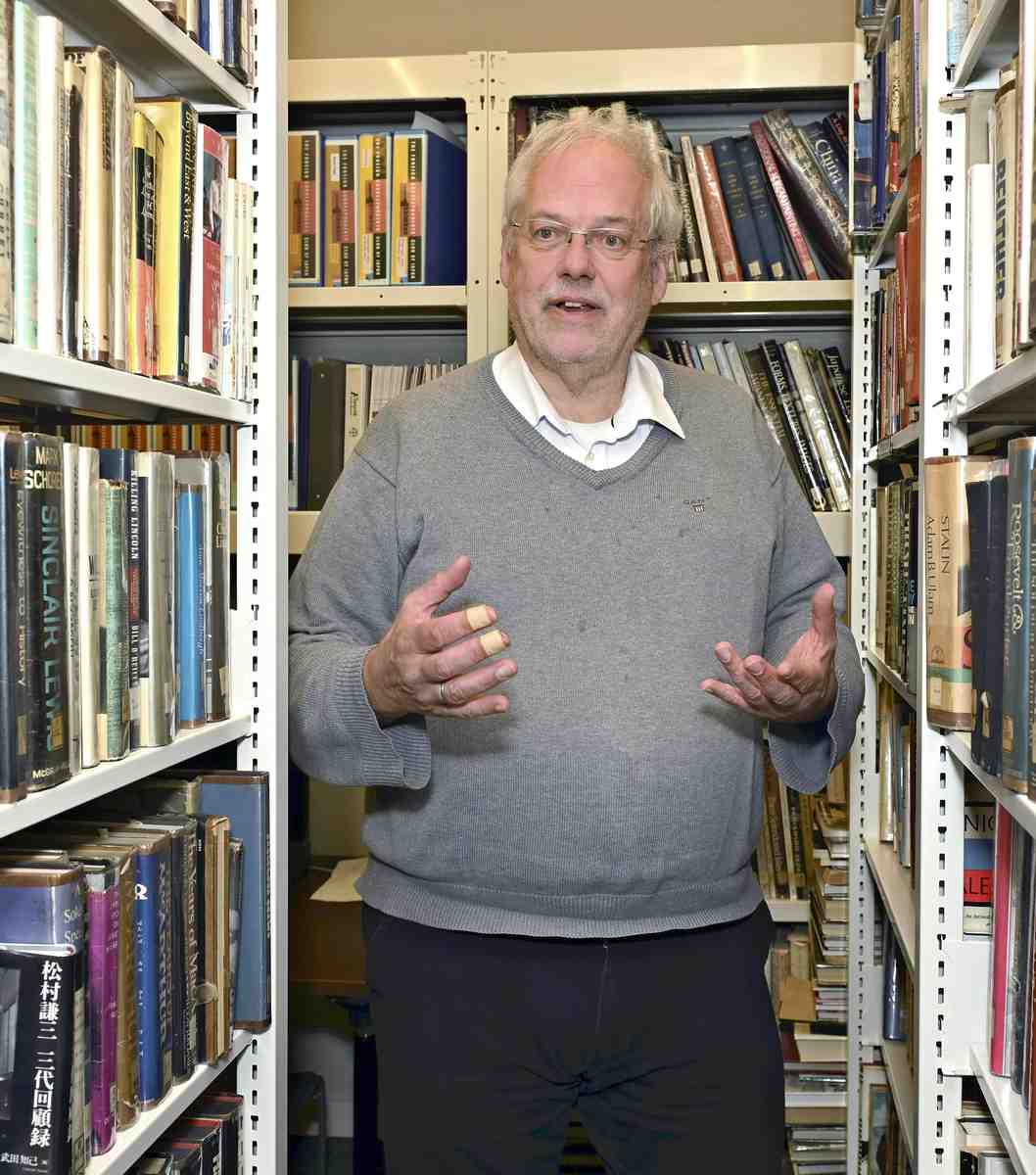
Asger Rojle Christensen stands in the library of the new Foreign Correspondents’ Club of Japan in Tokyo in November 2024
14:08 JST, March 27, 2025
The 1970 Osaka Expo was widely reported on not only in Japan but also by overseas media. The event that symbolized Japan’s remarkable recovery from defeat in World War II was received with surprise. The Danish newspaper Politiken ran a five-page special feature on the event.
“Japan has simply become synonymous with progress.”
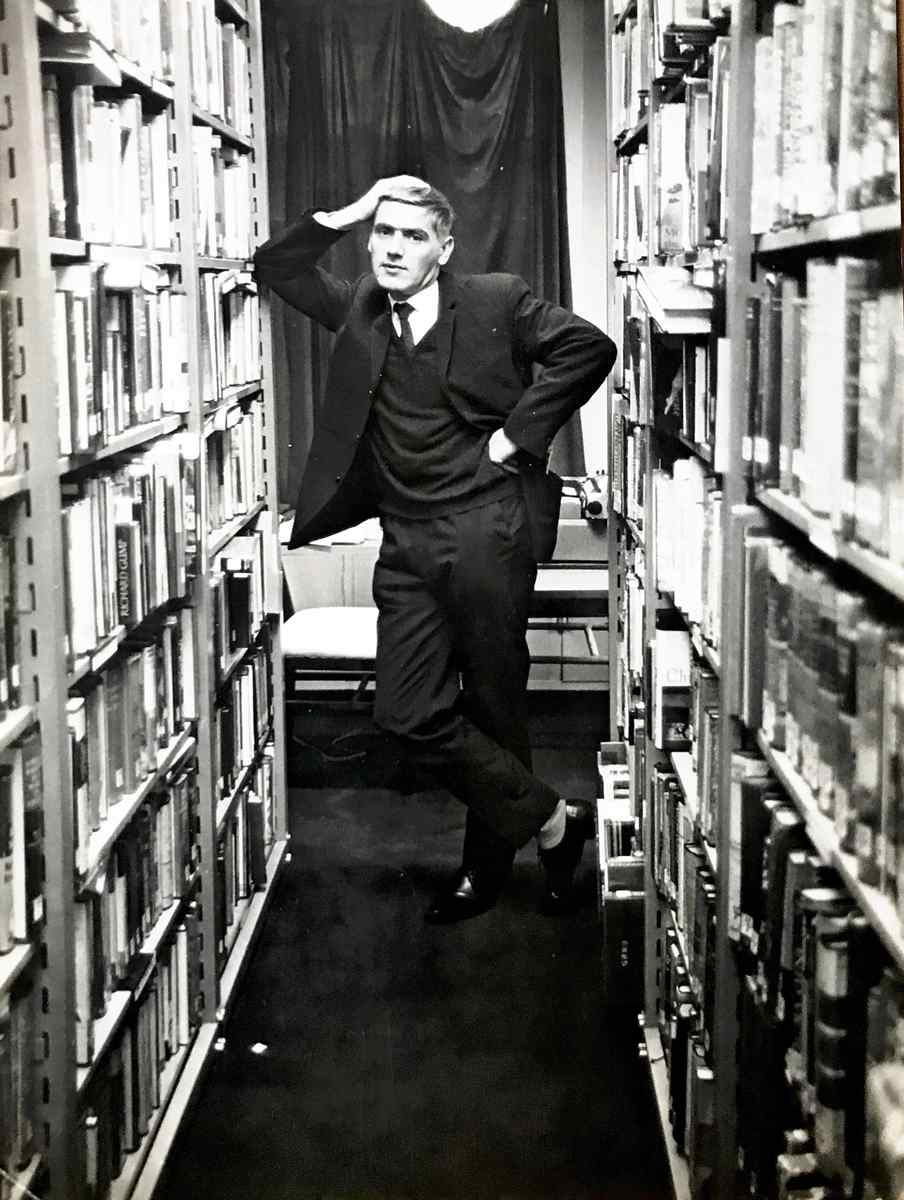
Svend Nyboe Andersen stands in the library of the old Foreign Correspondents’ Club of Japan in the 1960s.
This line appeared in an article about the exposition written by Svend Nyboe Andersen (1932-81), the first Danish correspondent n Japan. He had visited Japan under the Allied occupation as a seaman. Touched by the kindness of the Japanese people, Andersen became a journalist so he could return to Japan. He worked as a Tokyo correspondent for a total of about 10 years, from 1964 when the Olympics were held in Tokyo.
“His reports had a large impact on the image of Japan in Denmark during the sixties and seventies,” said Asger Rojle Christensen, a Danish journalist who has written about Japan for around 40 years, including 13 years of his time in Tokyo.
Four years ago, Christensen, 68, published a biography about Andersen, shedding light on the achievements of Andersen, who died at the young age of 49. Fifty-five years since the first exposition held in Osaka, Christensen will visit the upcoming 2025 Osaka-Kansai Expo to cover the event just as his predecessor did.
So much in common
Christensen never met Andersen, who was 24 years older than him. It was through Andersen’s daughter, Agnete, that Christensen found out about her father. Christensen and Agnete enrolled a journalism school in the same year and have known each other for a long time.
In May 2020, Christensen was working as a freelancer in Tokyo but found himself unable to travel due to the coronavirus pandemic. His work dried up, and he posted on social media asking, “Any writing requests for an experienced writer?” It was Agnete who responded. He was asked to compile and publish her father’s writings.
Following in the trail of Andersen’s footsteps, Christensen found things in common with his background: They were both posted to Tokyo with their families in their early 30s, had careers as correspondents for multiple media outlets and had an interest in Japan and a desire to get to the real picture of the country.
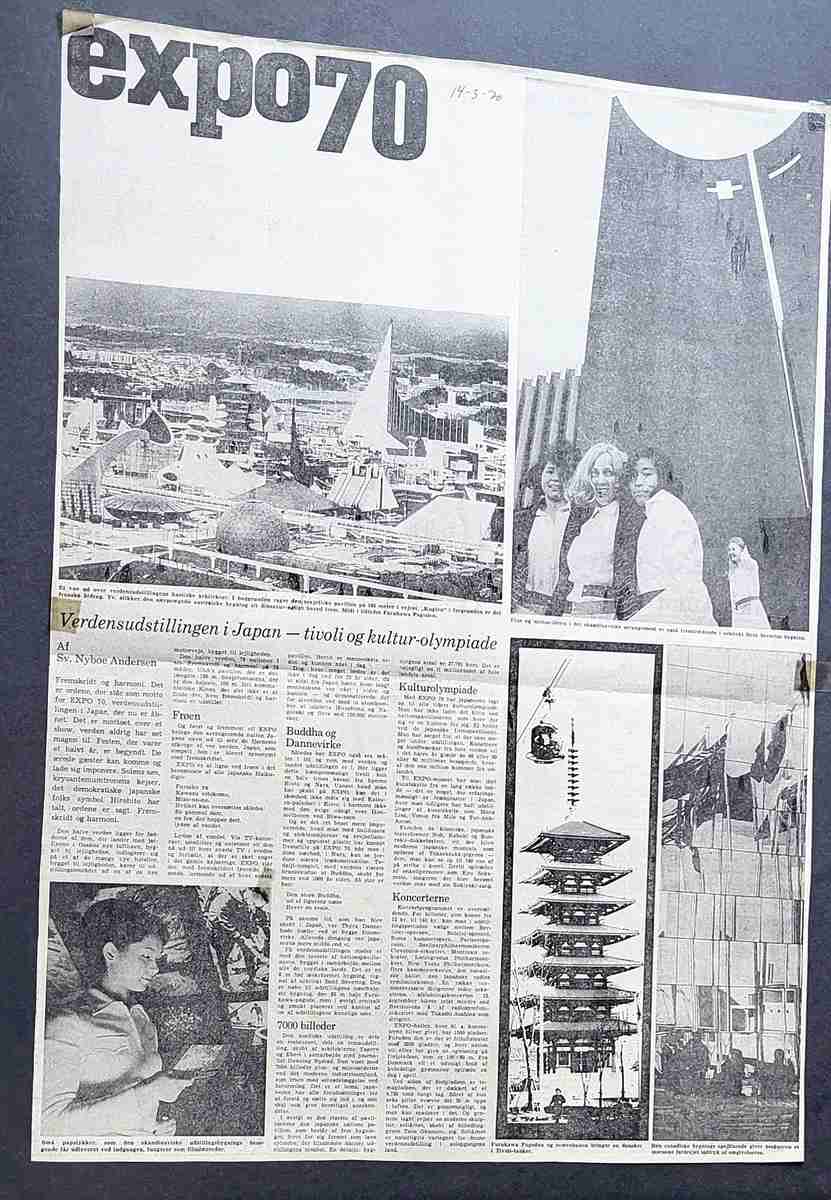
Andersen’s article introducing the pavilions of the 1970 Osaka World Expo
Andersen praised the futuristic technology at the exposition, but he also turned his attention to culture and reading about nature, writing, “Whatever you’ve created at the exposition, it certainly doesn’t compare to the Katsura Palace in Kyoto.”
Andersen wrote that he was surprised to see hotel and restaurant workers never accepting tips. Rather, they said, “We get our regular payment, sir.” He recalled the episode, writing, “It is still a conspicuous feature of Japanese workers and officials, as it has been of peasants and soldiers in earlier times, that ‘he lives well who lives anonymously.’”
Christensen’s connection with Japan began when he met his future wife in Tokyo while traveling for a visit to China as a student. After the 1995 Great Hanshin Earthquake, he walked from Osaka to Kobe to report the voices of the quake victims. In 2013, with his wife and children staying in Denmark, he was transferred to Tokyo again and lived in a studio apartment that was slightly cramped for the 1.94-meter-tall man.
In an article he wrote about Japan’s solitary deaths, which are a rare occurrence in the welfare state of Denmark, Christensen reported on Tokyo’s aging apartment complexes featuring residents who regularly meet up at a local coffee shop to look out for each other. The article conveyed the spirit of mutual support among the Japanese people.
During this time, Japan fell into a long recession and an increasing number of overseas media outlets moved their bases to China and elsewhere. However, Christensen said, “Japan made electronics that everyone would want, and had pop culture that everyone would love. Even though the economy is struggling, Japan is still one of the world’s leading economic powers.
“The world must not forget about Japan. With this in mind, I continue to report on Japan to my home country.”
Expo reflecting current Japan
Unlike in the days of Andersen, when the exposition generated a national frenzy, entertainment has diversified today, and the world is connected in an instant in this age of digitization. He said that is why he wanted to see if there would be any “surprises” at the next Expo.
He thinks whether it would be the Japanese or overseas pavilions that surprise visitors will reflect Japan’s current state in the world.
“I hope to report on exhibits that exceed the imagination and write articles that will impress readers with something they have never heard before,” he said.
Reporting on the upcoming Expo will be a great opportunity to capture the interest of readers in a faraway Nordic country. Christensen is looking forward to revisiting the Kansai region.
"Society" POPULAR ARTICLE
-
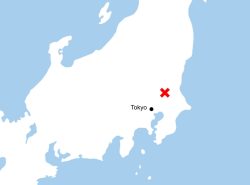
M4.9 Earthquake Hits Tokyo, Neighboring Prefectures
-
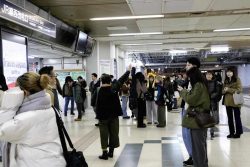
M7.5 Earthquake Hits Northern Japan; Tsunami Waves Observed in Hokkaido, Aomori and Iwate Prefectures
-
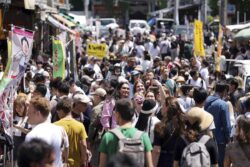
Tsukiji Market Urges Tourists to Avoid Visiting in Year-End
-
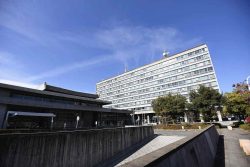
Israeli Tourists Refused Accommodation at Hotel in Japan’s Nagano Pref., Prompting Protest by Israeli Embassy and Probe by Prefecture
-
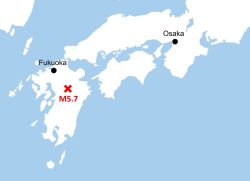
M5.7 Earthquake Hits Japan’s Kumamoto Pref., Measuring Upper 5 Intensity, No Tsunami Expected
JN ACCESS RANKING
-
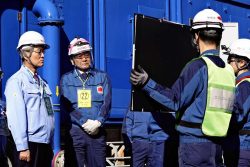
Keidanren Chairman Yoshinobu Tsutsui Visits Kashiwazaki-Kariwa Nuclear Power Plant; Inspects New Emergency Safety System
-
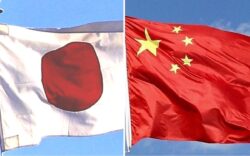
Imports of Rare Earths from China Facing Delays, May Be Caused by Deterioration of Japan-China Relations
-
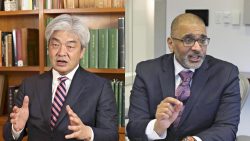
University of Tokyo Professor Discusses Japanese Economic Security in Interview Ahead of Forum
-
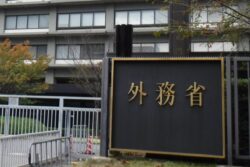
Japan Pulls out of Vietnam Nuclear Project, Complicating Hanoi’s Power Plans
-
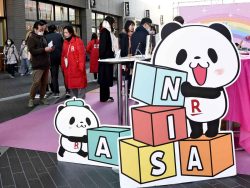
Govt Aims to Expand NISA Program Lineup, Abolish Age Restriction





